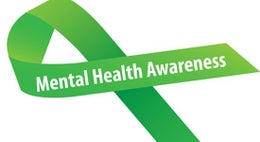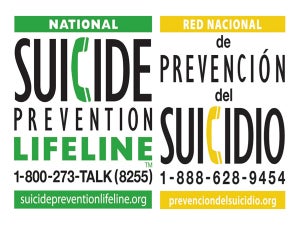
If someone asked you, “How’s your health?”, do you even consider your mental health? Or, do you automatically think about your physical health? Complete health and wellness encompasses both, but often our mental health is neglected. The statistics shows that most, if not all of us will be impacted by a mental illness at some point during our lives, whether we experience an issue ourselves or we know someone who is. There is no stereotypical person who suffers from mental illness and you can’t tell just by looking at someone. Even athletes who succeed in a “be tough” culture can suffer from mental illness and need help.
Mental Health by the Numbers
43.8 million adults (18.5%) experiences a mental illness in a given year, that’s 1 in 5
21.5% of youth 13–18 yo experiences a severe mental disorder at some point during their life, that’s 1 in 5
9.8 million adults (4.0%) experience a serious mental illness in a given year that substantially interferes with or limits one or more major life activities, that’s 1 in 25
14% of new incoming college athletes have lifetime prevalence of a mental illness
Prevalence is higher in contact sports as compared to non-contact sports
Prevalence is higher in individual sports as compared to team sports
Prevalence of depression is 15% to 23.7% in current college athletes, that’s approximately 60,000 to 96,000 athletes based on current participation numbers
8.7% of current college athletes have suffered depression within the last 12 months, that’s approximately 34,800 athletes based on current participation numbers
With regards to depression, data on 5-7 million high school athletes is unclear, but given the incidence of mental illness is increasing generally, it’s reasonable to say it’s increasing in young athletes too
National Alliance on Mental Illness (NAMI)
NAMI Mental Health Facts in America
NAMI Mental Health Fact Children and Teens
NAMI Mental Health Facts Multicultural
Suicide by the Numbers
800,000 deaths (1.4%) annually worldwide
44,000 deaths annually in United States, a 10% increase over 10 years between 2005 - 2015
45% increase in suicides for females over 10 years between 2005 - 2015 and 15% increase for males over the same period
Suicide accounted for 35 of 477 student-athlete deaths between years 2003 - 2012 (7.3% all cause mortality)
4th leading cause of death of college athletes behind traumatic accidents, cardiovascular deaths and homicide; 3rd leading cause for all youth between 10 - 24 years
Most likely athletes to commit suicide are male, African American football players
Football players at higher risk as compared to athletes of other sports
Concussion led to 2 times increased risk of suicide (all cause concussions, not just athletes)
Concussion led to increased risk of suicidal ideation

NAMI’s 10 Common Warning Signs
• Feeling very sad or withdrawn for more than two weeks
• Seriously trying to harm or kill oneself or making plans to do so
• Severe out-of-control, risk-taking behaviors
• Sudden, overwhelming fear for no reason
• Not eating, throwing up or using laxatives to lose weight, significant weight loss or weight gain
• Seeing, hearing or believing things that are not real
• Repeatedly using drugs or alcohol
• Drastic changes in mood, behavior, personality or sleeping habits
• Extreme difficulty in concentrating or staying still
• Intense worries or fears that get in the way of daily activities
Factors that Can Lead to Acute Mental Illness or Exacerbation of Chronic Illness in Athletes
• Injury – especially a “time loss” injury or a significant injury for someone who has never been injured before
• Post-concussion syndrome – prolonged symptoms from concussion can be challenging to handle
• Career transition – from one level to the next (ex. high school to college) or retirement from sport all together
• Harassment or discrimination –includes hazing, bullying, or retaliation
• Abuse – can be verbal, physical or emotional
• Violence – the result of trauma or perhaps physical abuse by someone you know

Mental Health Best Practices in Sport
Ensure clinical licensure of practitioners providing mental health care
Procedures for identification and referral of student-athletes to qualified practitioners
Pre-participation mental health screening
Health-promoting environments that support mental well-being and resilience
Tip: Selecting the Appropriate Professional
Be Brave Enough to Start the Conversation, but be Prepared
To recognize whether it is an emergent situation - suicide risk
For resistance and/or denial – “I’m fine” or “I don’t need help”
To discuss relevant resources, options, or opportunities – make sure you have some specific options in mind
To have the conversation more than once – keep a consistent message, be patient and empathetic
To maintain confidentiality and to be discreet in disclosure – know and abide by your professional obligation
I have one last video about perfectionism and its impact on the next generation and its connection to mental health. If you thought perfectionism was a good thing, this video may make you think again. (14 min)
References
Please contact Heather Clemons at hcbusiness75@gmail.com for the complete list (this post is already long enough)
Acknowledgement
A shout out to the senior athletic training students (and now athletic trainers) at San Diego State University for taking the time to engage on the topic of mental health back in April. Your genuine interest was obvious and it makes me extremely hopeful for the health and wellness of the physically active people you will care for. You’re also pushing athletic training forward. Athletic trainers have always been and will continue to be so much more that tape and ice.
DISCLAIMER: The content contained in this blog is for informational purposes only. The content is not intended to be a substitute for professional medical advice, diagnosis or treatment. Always seek the advice of your physician, athletic trainer, or other qualified health provider with any questions you may have regarding a medical condition. If you think you may have a medical emergency, call your doctor or 911 immediately.

